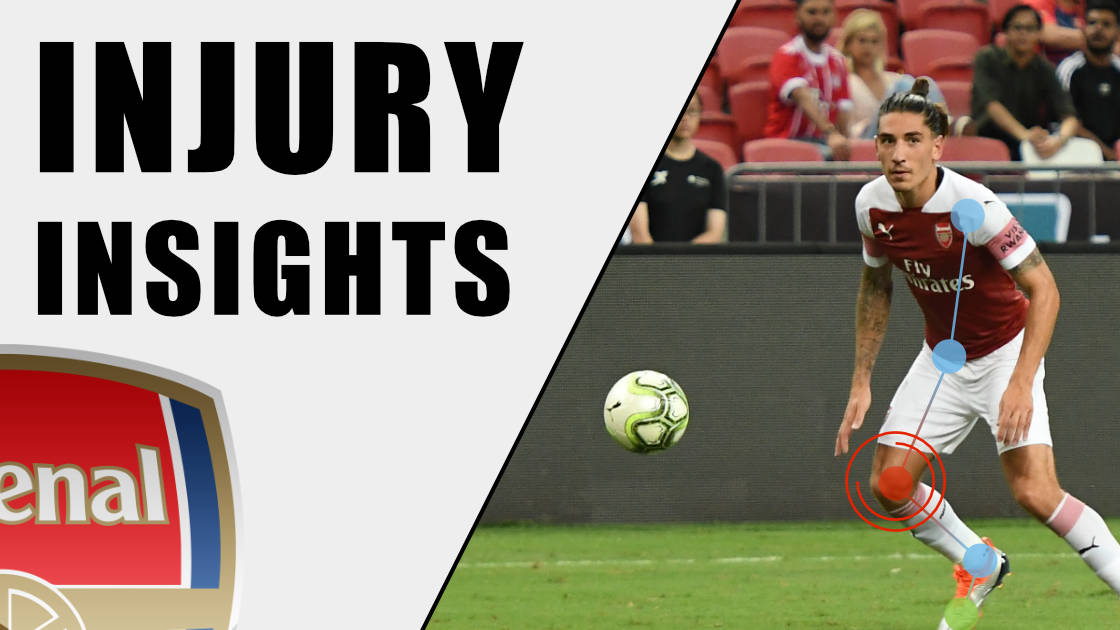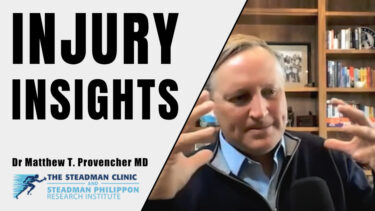

Hector Bellerin suffered what is thought to be a serious knee injury during Arsenal’s Premier League encounter with Chelsea on Saturday. A setback which came only a week after his return to play from a calf strain that he suffered in mid-December to the same leg.
Initial thoughts from leaders within Sports Medicine have speculated that he may have torn his anterior cruciate ligament.
By examining the mechanism of his injury from video analysis, there is a clear shift of the tibia (shin bone) in a backwards direction. This type of movement is usually more indicative of a PCL injury, rather than an ACL, given that the posterior cruciate is the main restraining ligament which prevents excessive movement of the tibia in a backwards direction.
However, what if….
We assume that the femur (thigh bone) has moved forwards at the same time as the shin bone moved backwards, that would indicate that Bellerin has in fact damaged his ACL and will almost certainly need reconstructive surgery which is likely to mean around 9 months on the sidelines.
Why did it happen?
There are of course a range of risk factors which will have played a role in this non-contact injury, but for the purposes of this blog will stick to some of the more generally recognised risk factors.
Fatigue
Bellerin is a modern-day attacking wing back and carries out a lot of explosive sprints and lung bursting high-intensity runs up and down the pitch repeatedly over a period of 90 minutes – no mean feat at all -you try it!!!! This type of high-intensity exercise can predispose the player to early onset of fatigue. Furthermore, if we examine the sports medicine literature, there are a number of influential papers on this matter which suggest that fatigue is a major risk factor for injury and therefore, given the demands of playing this position on the pitch and the fact that he has just returned from an injury, it could certainly have played a role, especially given it occurred in the latter stages of the game.
Previous Injury
This then brings us on the second risk factor for future injury – that is previous injury. Previous injury is a well-known and accepted risk factor for increasing the risk of injury. Bellerin suffered a calf injury to the same leg on the 16th of December and had just returned to play – against West Ham (GW22) – in a brief 21-minute run out. It has been well-documented in leading research papers in this field that the first 4 weeks of a RTP carries significant risk for a recurrence of injury, not just from the initial problem but from any injury in general.
Graded Return to Play
Therefore, the question could be asked, was it too much of a jump to go from playing 21 minutes to starting a Premier League game in just seven days. If Bellerin was still on a restricted minutes plan – i.e. only allowed to play for 45 minutes against Chelsea, then 60 minutes for the next game, and 75 for the following and then a full 90 minutes on his fourth week following a return to play, this would certainly have mitigated the risk of injury from the two aforementioned risk factors: Fatigue and Previous Injury.
Incomplete Rehab
Bellerin suffered his calf injury in December and returned to play against West Ham 26 days later. If we break down this time period it would be reasonable to suggest that he did not have enough time to A) recover from the calf injury itself. B) regain his pre-injury strength, aerobic and anaerobic fitness levels.
For example, let’s assume that the first 5 days following the injury were spent convalescing from the injury: protecting the injured area, relative rest to promote optimum healing, ice to help reduce pain levels, compression and elevation to reduce excess inflammation to the area and gentle pain free movement to encourage normal mechanics of the lower limb, the player is now only left with three weeks before he enters the fray against West Ham.
In this 21-day period, it would be reasonable to suggest that he had 3 to 4 rest days to optimise any gains in strength and/fitness levels – which then leave him only 16 or 17 days to return to full fitness levels to tolerate the brutal demands of the Premier League.
Now let’s, complicate things even a little more. It is normal practice for a player to be expected to take part in a full week of squad training before bringing declared fit for selection for competitive games. Therefore, his return to train date was probably on the Monday before the WEST HAM game, which now means that he would only have spent 11 days building up his strength, speed and fitness levels.
During this 11-day period; 4 to 5 days would have been spent progressing from running in the pool, to the AlterG (Anti-Gravity Treadmill), to a soft surface and then onto grass. His running pace would have progressed from a slow steady jog to all out sprinting possibly over a 6-day period, if all went well. Then for the remaining few days, he would have had to complete some repeated short sprints similar to match pace, some maximal jumping and kicking before being declared fit to return to squad training on the Monday prior to West Ham. Fine margins and an all too tight timeframe – certainly not enough time to regain strength and fitness levels comparable to pre-injury levels.
Therefore, given all of this, he probably wasn’t afforded the time needed to complete a full recovery from his calf injury – but this is normal in professional sport and is generally accepted by all those who work in elite a professional sport as an industry hazard.
Risk Management
The player, coaching staff, manager and sports medicine team will all have inputted into whether or not they felt it was the right decision for the player to return to train and play so early following his calf injury. At the time these domain experts made the best decision they could with the available information they had at hand, which will of course include the wishes of the player. They will have used – GPS data, strength profile tests and aerobic/anaerobic tests to gauge his progress. However, all these tests have limited utility in isolation and in reality, maybe the player just needed a bit more time to make a full return to play with unrestricted minutes following injury – a lesson for all of us, I think. No matter how robust you think your battery of testing is or how eager the player is to return to play, the better decision would have been to be more cautious in his return to full play strategy.
So, in summary, I can imagine that the Arsenal sports medicine and coaching staff are reflecting on this latest injury and hypothesising what risk factors may have played a role in this injury and what they could do to mitigate a similar injury in the future: injury sport related growth for everyone.



